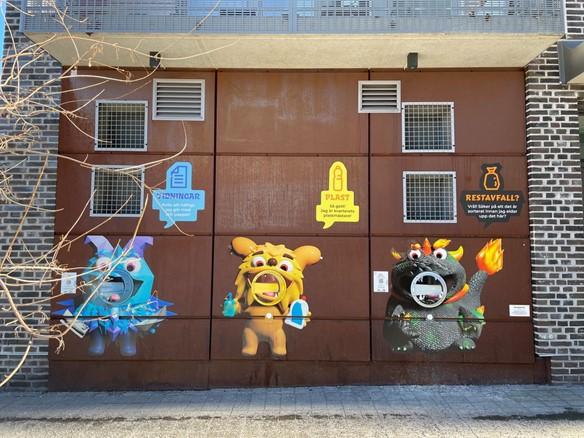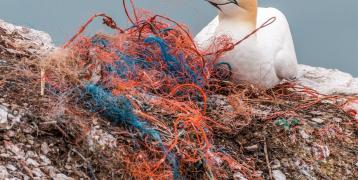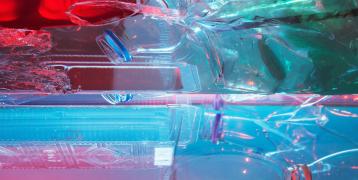Decreasing plastic pollution through better monitoring

Millions of tonnes of plastic litter are leaking into the world’s oceans every year. In the EU, this amounts to up to 500 000 tonnes of plastic waste annually entering the oceans. This represents a small portion of global marine litter, but plastic waste from European sources ends up in particularly vulnerable marine areas, such as the Mediterranean Sea and parts of the Arctic Ocean.
This phenomenon is intensified by the ever-increasing production of plastic goods, the growing consumption of ‘single-use’ plastics and newly emerging sources of plastic waste, such as microplastics, tiny material fragments with potentially harmful effects on the environment and human health.
According to Zero Waste Europe, ocean-based sources of marine litter include the fishing and shipping industries, boating tourism, and offshore oil and gas platforms. Still, by far the biggest source of marine litter worldwide is land-based (80%) and is key to preventing litter from finding its way into the sea in the first place.
Establishing a circular value chain for plastic materials would therefore be greatly beneficial in reducing unwanted pollution. It is estimated that only 14% of plastic packaging is collected globally for recycling.
Furthermore, there are discrepancies in primary municipal data on solid waste management, and the monitoring of plastic materials in both waste streams and the environment is limited. As stated in a recent study, “the actual amount of plastic waste in rivers could be up to 90% greater than previously assumed”.
A new Interreg Europe project called PLASTIX is focusing on the reusability, recyclability and replaceability of plastic materials as part of the transition to a circular economy. The project has recently published a study looking at the plastics sector in six partner countries.
The areas of improvement
According to Johanna Vannes, the project’s lead partner and a Senior Specialist at the Baltic Institute of Finland, the report showed that it is important to look at the value chain as a whole.
“We found there are things that should be improved everywhere. The main ones would be ecodesign, replacing the fossil-based products with biobased materials, and chemical recycling – an area that needs to be developed, we need more research and innovation in all phases.”
While many EU policies are tackling plastic pollution, improvements are still often to be implemented, specifically in the field of recyclability and collection of different plastic materials, explaining different types of plastic waste and how they should be handled, as well as awareness raising.
“More recycling guidance and awareness raising is still needed, especially regarding microplastics. People need to learn what microplastics are and where they can be found. We also need to make sure microplastics are not ending up in marine ecosystems, which we can do, for instance, through better wastewater treatment and prevention,” says Johanna.
Monitoring of plastic waste
Monitoring is another area where policies need to be improved and further developed. Johanna names some of the tools which can be used to improve monitoring, including “financial instruments, taxes, extended producer responsibility schemes for various materials and better communication.” It is no less important to monitor the policies focusing on the circular economy of plastic materials and evaluate if they actually work.
Local authorities can use various guides to regularly monitor and evaluate the performance of their waste management services, for example, the Monitoring and Evaluation Guidance developed by WRAP, or UNEP’s guidelines for Monitoring Plastics in Rivers and Lakes.
The exchange of knowledge with other regions is another excellent way to gain some inspiration for different waste monitoring methods. The CAPonLITTER project pointed out a good practice by the Marine Litter Observatory in Fuerteventura. The observatory combines research, innovative tools for collecting microplastics from the marine environment, and training, education and awareness-raising to prevent plastic waste from entering the oceans.
Another example is Sindra, a waste observatory in the Auvergne-Rhône-Alpes region (PLASTECO project). Sindra is a highly functional tool for regional waste management monitoring, useful on several fronts.
It has an educational aspect, providing local citizens with information on how to correctly dispose of various waste types, and serves as an integrated database for public and private companies. The collected data is used to create waste management plans on local, regional and national levels, and enables direct comparison between municipalities.
In Finland, plastic circular economy is promoted in the framework of an extensive national programme Plastics roadmap for Finland 2.0, and is being implemented by a broad network of various actors.
In the Tampere region, where Johanna is located, the current focus is mainly on “exploring the possibilities of chemical recycling, developing a collection system for rigid plastics, boosting the use of recycled plastics, and increasing the collection of plastic packaging from companies and housing cooperatives.”
The region is already taking steps towards a circular plastics economy. “We are currently running a pilot project on collection of rigid household plastics here in Tampere”, says Johanna. The first phase of the pilot took place from September to November, and the second phase is planned for spring 2024.
Monitoring is a big part of the pilot project, as it determines the most common types of plastics in waste streams. So far, the majority of products were made from PP – polypropylene (56%), with HDPE - high-density polyethylen (23%) being the second highest.
Sharing with partners within the PLASTIX project will help to further develop Tampere’s policies and methods, leading to a truly circular economy for plastics, resulting in reduced pollution.




